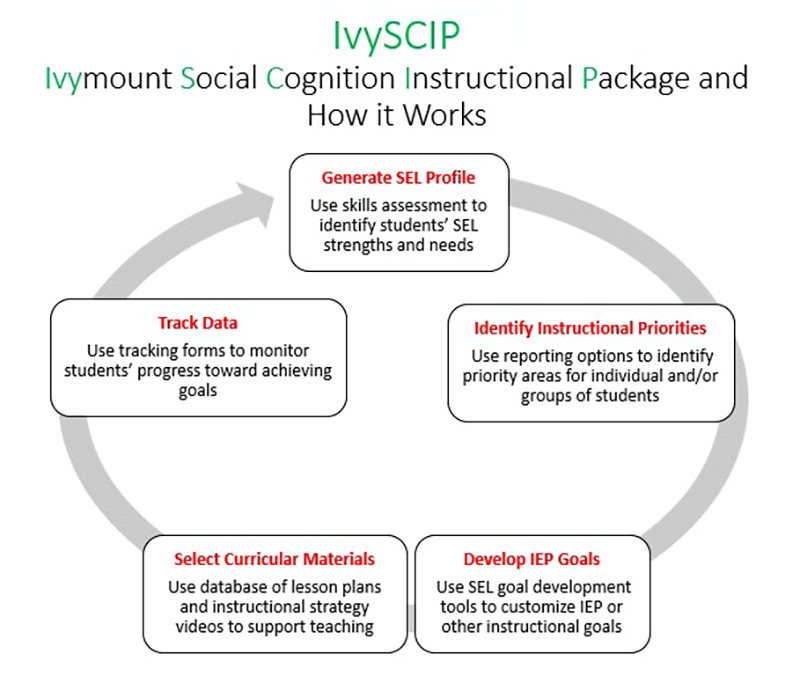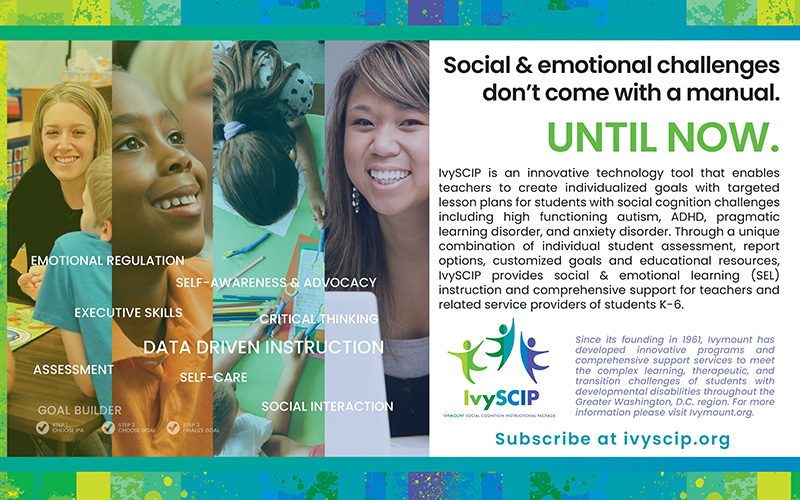For the past two decades, educators have placed increasing emphasis on social and emotional learning (SEL) as part of a well-rounded K-12 curriculum. Research shows that SEL plays a significant role in students’ academic success (Corcoran et al., 2018; Schonfeld et al., 2015), and contributes to positive post-school outcomes like employment and participation in higher education (Dymnicki eta al., 2013). Instruction targeting SEL is especially critical for our autistic students, many of whom – as a result of brain-based differences – require explicit instruction in order to develop skills for effective self-advocacy, perspective taking, emotion regulation, executive function, and reading and responding flexibly to social context clues (Sigman & Capps, 1997; Vermeulen, 2012). Because SEL encompasses such a broad range of skills, and each autistic student presents with a unique SEL profile, a key challenge for educators is knowing where and how to begin providing SEL instruction to their students.

Introducing Ivymount Social Cognition Instructional Package (IvySCIP)
The Ivymount Social Cognition Instructional Package (IvySCIP) was designed by autism educators at Ivymount School in Rockville, Maryland to provide individualized, data-driven support for SEL instruction. Almost ten years ago, Ivymount teachers and related service providers working with their autistic students with average cognitive levels and language abilities realized there were no assessment tools designed to evaluate SEL skill levels for this particular population, and a group of us set out to remedy this. With input from dozens of experts in autism, child development, and social cognition, we developed the IvySCIP strengths and needs assessment, and aligned it with the five key social domains identified by the Collaborative for Academic, Social and Emotional Learning (CASEL): self-awareness, self-management, social awareness, relationship skills, and responsible social decision-making.
As we shared the IvySCIP strengths and needs assessment with more and more educators throughout the U.S., it became clear we were not alone in our desire for data-driven SEL resources for our autistic students. Teachers and related service providers – especially those new to the field – consistently reported feeling overwhelmed by the questions of how to assess students’ SEL skills, minimize “guess work” when identifying instructional priorities, and track progress over time. Consequently, our goal shifted from creating a tool exclusively for “in-house” use, to developing something for sharing with the field more broadly. We received a grant from the U.S. Department of Education’s Institute of Education Sciences (IES) to further develop and test IvySCIP in collaboration with 3C Institute of Durham, North Carolina (our software developer). Together we developed, IvySCIP, an online tool that would automatically link students’ SEL assessment scores to a wide range of instructional resources, effectively answering the question of “Where do I begin?” when providing SEL instruction for autistic K-5 students.
IvySCIP Process Cycle
The IvySCIP process cycle (see above graphic) illustrates the ongoing, iterative nature of the tool’s intended flow from assessment, through identification of instructional priority areas, instructional goal development, selection of curricular resources, data tracking, and back to assessment again. Although components of the IvySCIP can be implemented at any time – e.g., the strengths and needs assessment can be administered at the beginning of the academic year or prior to a students’ IEP meeting – the entire IvySCIP process cycle is designed to be completed once per year for each student. The strengths and needs assessment -0 as well as other components of the IvySCIP – can be used alone or in combination with other SEL interventions to improve students’ SEL performance, as well as to provide a means of measuring students’ progress over time. Completion of the strengths and needs assessment requires approximately 30 minutes per student.
Evaluating Strengths and Needs – At the heart of IvySCIP is the 113-item SEL strengths and needs assessment that allows educators to generate individualized SEL profiles for their students. The assessment should be completed by educators who have known and worked closely with students for at least three weeks and observed them interacting with their peers in a classroom or other instructional setting. Educators rate student mastery/need for coaching and support using a five-point scale from unable to demonstrate to fully independent. Many of the items include probes that can be used to ensure accurate assessment of students’ skill levels. Upon completion of the strengths and needs assessment, several reporting options are available, including a color-coded SEL profile report that highlights areas of independence, emerging skill and critical need. Users are also able to generate a narrative report that summarizes performance implications of students’ scores within each of the five domains (designed especially for sharing with parents and other members of students’ IEP teams).
Identifying Instructional Priority Areas – Based on students’ scores, IvySCIP automatically suggests several instructional priority areas, and educators can select one or more of these areas on which to focus or start instruction. They are able to view skills within each of these areas broken down by instructional sequence, as well as by the student’s current level of mastery. The purpose of this step is to help educators make thoughtful, informed decisions as they prepare to set SEL IEP goals.
Developing IEP Goals – One of the primary functions of IvySCIP is to link educators to a customized IEP goal development tool. For each of the instructional priority areas selected, educators are directed to a list of possible SEL goals. Once educators have selected a goal they wish to include on a student’s IEP, they are directed to a series of drop-down menus that allow them to customize the goal to include the following components: (a) givens (e.g., visuals, graphic organizers, social stories, scripts), (b) settings (e.g., one-to-one support, small group, large group, or community), and (c) performance targets (e.g., 80% of observed opportunities, across multiple settings, or across 10 days). Users also have the option of creating their own goals and customizing givens, settings, and performance targets to best match their students’ needs.
Selecting Curricular Materials – A database of almost 200 lesson plans is available to educators, searchable by instructional priority area, as well as evidence-based tips and strategies that provide suggestions for “getting started” (e.g., brief modules on video modeling). When appropriate, resources are automatically flagged as a means of supporting mastery of specific IEP goals.
Tracking Progress – Once educators have developed an IEP goal, they are given the opportunity to select from several customizable data collection forms for use in tracking students’ progress toward individual goal mastery. These easy-to-use, online forms support educators in the systematic collection and evaluation of goal-related data. The IvySCIP also enables educators to track students’ progress over time (e.g., comparing overall SEL performance from year to year).
A Focus on Building Social Cognitive Skills
Most assessment tools on the market take a deficit-based as opposed to a skills-based approach to evaluating students. This means they focus on assessing the presence of challenging behaviors, as opposed to the building of necessary awareness and skills. We take the opposite approach. We believe that challenging behaviors crop up when students lack the skills to engage more constructively with their social environments, and by teaching critical skills and developing students’ social cognitive awareness, unwanted behaviors (e.g., self-injury and/or aggression) will naturally disappear.
IvySCIP also focuses on social cognition as opposed to social skills. This means we do not simply teach rote skills like “asking questions” or “greeting peers.” Instead, we provide students with a toolbox of skills and teach them the how and why to flexibly apply these tools depending on social context and desired outcome. This means teaching our autistic students that greetings may look different when interacting with teachers (e.g., “Hello Ms. Cannon”) as opposed to peers (e.g., “Hey dude! What’s up?”).
What Does the Research Say About IvySCIP?
We tested IvySCIP with 51 educator/student pairs (Müller et al., forthcoming), and found the following:
- Students’ SEL skills grew significantly following introduction of IvySCIP as measured by a variety of assessment tools.
- IEP goal quality improved significantly.
- Educators appeared to devote more class time to SEL instruction following exposure to IvySCIP.
- Educators gave high marks to IvySCIP’s effectiveness, innovation and value.
IvySCIP was also singled out in 2016 by the Obama White House as a model example of educational assessment technology.
Eve Müller, PhD, is Coordinator of Program Evaluation and Outcomes Research at Ivymount School and Programs. Lynn Cannon, MS, is Social Learning Coordinator at The Maddux School and The Ivymount School. For more information on IvySCIP, or to purchase licenses, see www.ivyscip.org.
References
Corcoran, R., Cheung, A., Kim, E., & Xie, C. (2018). Effective universal school-based social and emotional learning programs for improving academic achievement: A systematic review and meta-analysis of 50 years of research. Educational Research Review, 25, 56-72.
Dymnicki, A., Sambolt, M., & Kidron, Y. (2013). Improving college and career readiness by incorporating social and emotional learning. College and Career Readiness and Success Center.
Müller, E., Wood, C., Childress, D., Cannon, L., & Dardick,W. (forthcoming). Preliminary investigation of the relationship of Ivymount Social Cognition Instructional Package (IvySCIP) to similar assessment tools and impact on students with high functioning autism. Journal of International Special Needs Education.
Schonfeld, D., Adams, R., Fredstrom, B., Weissberg, R., Gilman, R., Voyce, C., & Speese-Linehan, D. (2015). Cluster-randomized trial demonstrating impact on academic achievement of elementary social-emotional learning. School Psychology Quarterly, 30(3), 406.
Sigman, M., & Capps, L. (1997). Children with Autism: A Developmental Perspective. Cambridge, MA: Harvard University Press.
Vermeulen, P. (2012). Autism and Context Blindness. Shawnee Mission, KS: AAPC Publishing.








